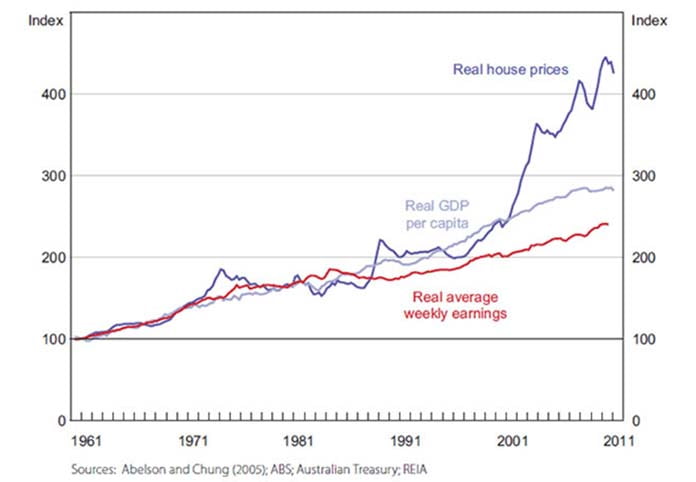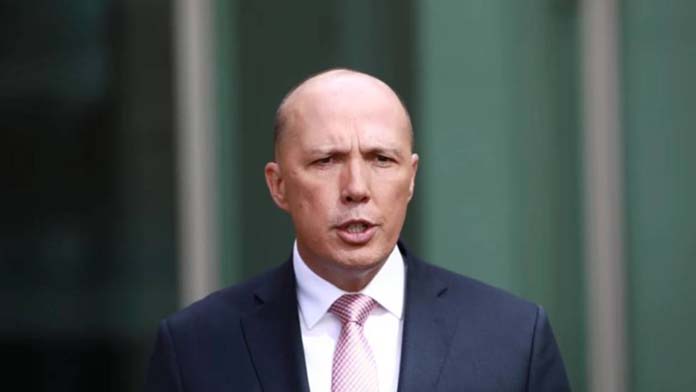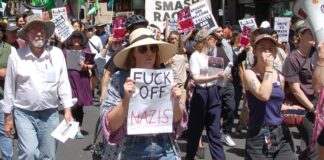Liberal leader Peter Dutton used his budget reply speech to drum up racist scaremongering in a desperate bid to try and boost the Coalition’s plummeting support.
He played up the fact that net migration was projected to increase “massively by 1.5 million people over five years”. He linked the “migration surge” to the “housing and rental crisis”, arguing immigration levels “will make a bad situation worse”.
Dutton has form when it comes to racist scapegoating. In 2018 he blamed immigration for “gridlocked traffic”, the state of hospital services and “overcrowded” cities. In 2016 he claimed refugees “steal Aussie jobs” and use up welfare spending.
The migration scare campaign won’t be enough to revive the Coalition’s flagging political fortunes, but it will encourage the far right and other racists. Open Nazis mobilised in Melbourne off the back of his comments.
Prime Minister Anthony Albanese argued that it was important not to be sucked into a scare campaign over migration levels. But more than what Labor says, what matters is what it does. Dutton has a chance to get a hearing because Labor has no answers to the cost of living and housing crisis.
The projected higher migration figures reflect in part the re-opening of borders after the pandemic. By 2024 there will still be 215,000 fewer migrants than projected by the Coalition’s budget in 2019—making Dutton a hypocrite and opportunist.
According to Brendan Coates from the Grattan Institute, 400,000 of the projected 1.5 million migrants over five years have already arrived. The migration level will fall to 315,000 next year and 260,000 the year after that.
As Coates comments, “Migration certainly means we need more homes. But how does a smaller population than was expected just four years ago lead to a rental crisis?”
The are several factors. First, there has been a long-term trend to smaller household size, which means more homes are needed. This is a result of more single households, fewer children per person and an aging population.
It was accelerated by COVID, because people demanded more space, for instance an extra bedroom for an office, or moved out.
Average household size fell from 2.55 in 2020 to 2.45 in 2022. That might not sound like much, but it means an extra 275,000 houses are needed.
The National Housing Finance and Investment Corporation says single households are the fastest-growing type, with an additional 533,300 expected by 2033.
It said in March that migration and a slump in new housing construction would widen the shortfall of homes by only 40,000 over five years. Clearly household size has a bigger impact than migration.
Rich investors
A second factor is that already obscenely high house prices were boosted again by low interest rates during the pandemic. Increasing interest rates then put pressure on investors, who easily passed on the pressure as rent increases because of the shortage of housing supply.
Efforts by the Liberals to blame housing prices on migrants are particularly gross hypocrisy. It is rich investors who have driven prices to obscene levels. The real boom for investors came when Coalition Prime Minister John Howard removed limitations on negative gearing and halved capital gains tax (CGT) in 1999.
Before the changes, about half of investors claimed a rental loss, compared to 70 per cent now. Negative gearing and capital gains concessions cost around $25 billion per year, with 56 per cent of benefits going to the top 10 per cent of taxpayers.
Above all the housing crisis is a failure of government planning to build enough houses. Government knows the number of houses needed well in advance. Public housing has dropped from around 7 per cent of stock in 1991, to 4 per cent today.

Labor plans to build up to 39,000 social housing units over five years, with $2 billion delivered to the states and a housing fund spending $500 million per year. But there is already a social housing shortfall of 524,000 homes.
Labor will spend around $30 million a day on nuclear submarines and about twice that on the Stage Three tax cuts. There is no lack of money.
The Greens are right to call for $5 billion per year to be spent on social and affordable housing, a cap on rents, to phase out negative gearing and scrap the CGT discount. But it will take a fight to win this—uniting migrant and local workers.
The interests of local and migrant workers are exactly the same—for quality, affordable housing, union rights and a living wage.
By Chris Breen






